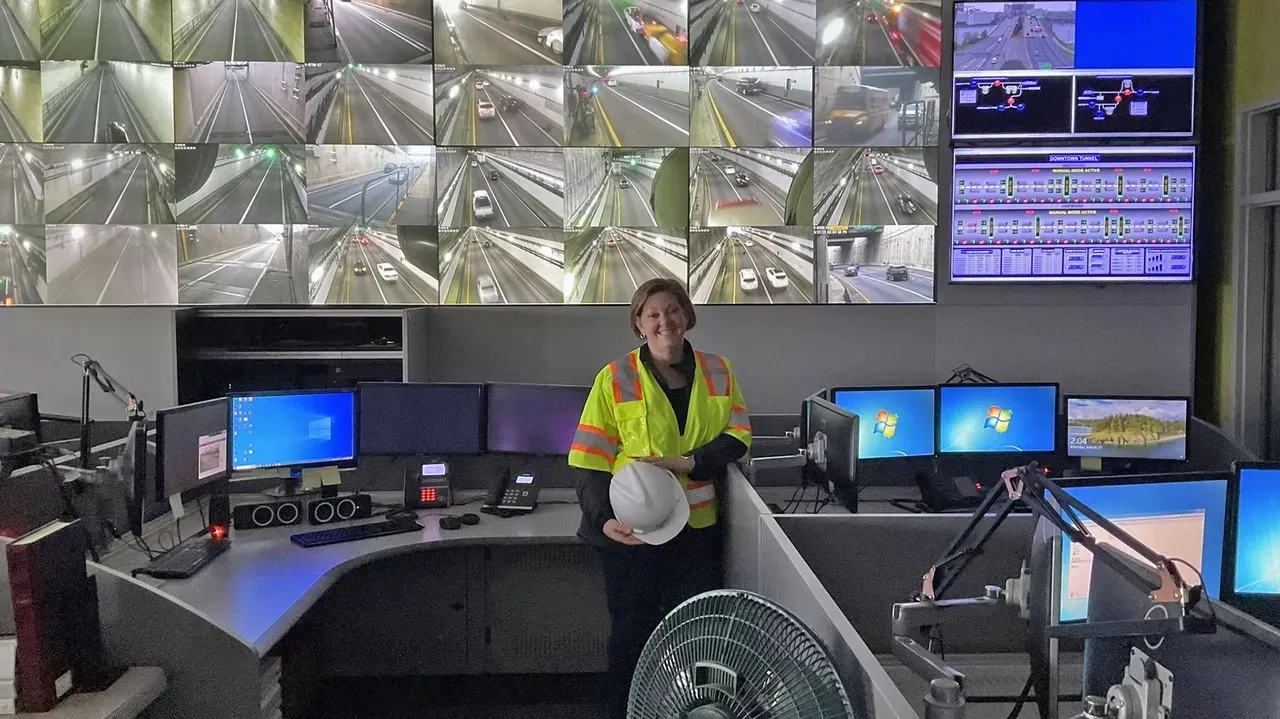
Construction of the original two-lane tunnel under one of the city’s most densely populated arrondissements started in 1939. Work was halted by the Second World War when the site was used as an air-raid shelter. It was finally opened in 1952. The original tunnel has a speed limit of 50kph and nearly 50,000 vehicles use it daily.
Physical separation
A concrete barrier was installed in 1998 to physically separate the two lanes, both of which have a useable width of almost 6m. But physical deterioration by then was starting to be a concern, as well as a lack of escape tunnels, which meant something had to be done.
Much consultation ensued to consider options such as double-decking the original tunnel and widening it. But the chosen option was to make a parallel tunnel and use it for more eco-friendly modes of mobility.
The single vehicle lane is for public transportation – buses – and there is a separate two-way cycle path as well as a wide separate pedestrian path. Thanks to 11 cross-galleries the latest 10m-wide tunnel acts as the escape tunnel for the original vehicle tunnel, explained Hermen. Around 2,300 cyclists and 2,000 pedestrians use the new tunnel each day.
Emergency escape
A barrier, almost 1m high, separates the busway from the cycle lane. But there are many sections of the barrier that will slide open in the case of an emergency, should people need to escape the tunnel. The escape cross-galleries are sealed by heavy doors that are motorised for ease of opening from inside. There are also digital temperature readouts inside the galleries so occupants know, in the case of a fire, what the temperature is right behind the door. A main control centre for all motorways and the tunnels in Lyon lies some way away, but there is a small operations control centre at one end of the new Croix-Rousse for monitoring an emergency situation on-site.
During a technical tour of the Croix-Rousse ‘eco-tunnel’, delegates experienced the three-dimensional video show that covers much of the infrastructure’s walls. The artistry and imagination has turned a city commuter’s daily experience into a must-visit for many tourists to Lyon.









